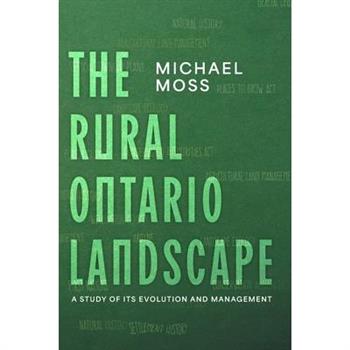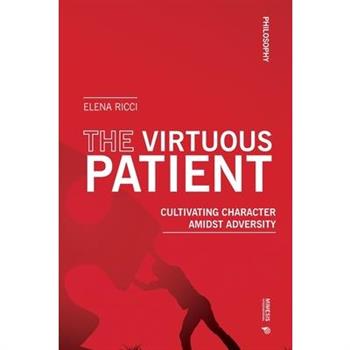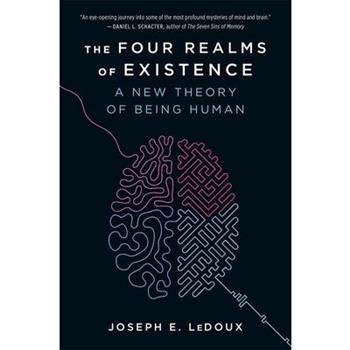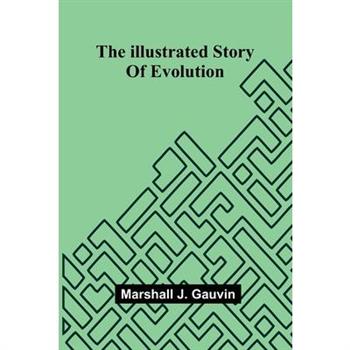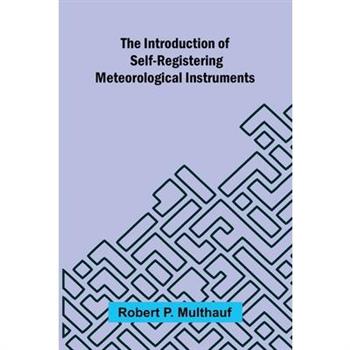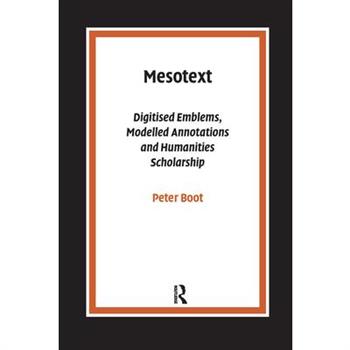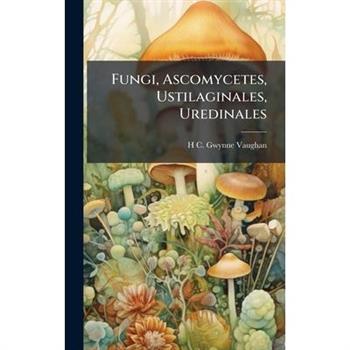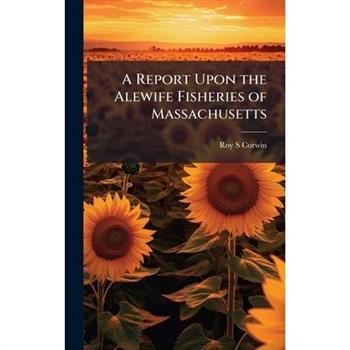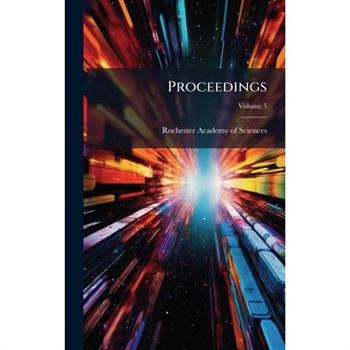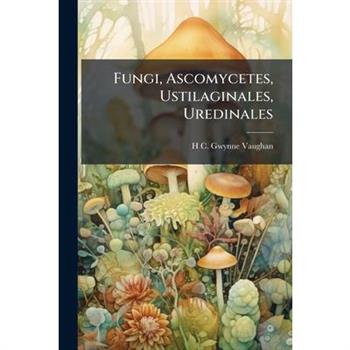Death in Glacier National Park
Adventures in the wilderness can be dramatic and deadly. Glacier National Park's death records date back to January 1913, when a man froze to death while snowshoeing between Cut Bank and St. Mary. All told, 260 people have died or are presumed to have died in the park during the first hundred years of its existence. One man fell into a crevasse on East Gunsight Peak while skiing its steep north face, and another died while moonlight biking on the Sun Road. A man left his wife and five children at the Apgar picnic area and disappeared on Lake McDonald. His boat was found halfway up the west shore wedged between rocks with the propeller stuck in gravel. Collected here are some the most gripping accounts in park history of these unfortunate events caused by natural forces or human folly.
Where Wilderness Preservation Began
A collection of writings and a journal of the late Howard Zahniser. Zahniser was the executive director of the Wilderness Society and the author and chief lobbyist for the 1964 Wilderness Act that created the National Wilderness Preservation System. His son, Ed, edited this collection with commentary by George Davis, Paul Schaefer, and Douglas W. Scott.
Nightmare Obscura
A leading sleep expert reveals the latest science behind the dreaming brain and why we have nightmares--offering key insights into how harnessing dreams can improve your sleep and health. To most, dreams are things that slip away when you reemerge into the waking world, their remnants jumbled up and only half recalled. At their best, they are populated by pleasant recollections and surreal experiences. But at their worst, they can be traumatizing and prevent us from receiving the necessary benefits of sleep. So why do we dream at all? What makes a person prone to nightmares? How do our bodies interface with our brains when we're not awake? And how can we harness our sleeping minds to improve our waking lives? In Nightmare Obscura, dream researcher Michelle Carr unlocks the science behind the sleeping body, exploring the relationship between dreams and mental health, with a deep dive into the neuroscience behind some of the most interesting aspects of dreaming: nightmares, lucid dreams, and the cutting-edge field of dream engineering.
Wild Woman
'Deeply personal and poignant' BBC Countryfile An engaging blend of conservation stories and humorous, personal anecdotes from Philippa Forrester about women who, like her, choose to live and work in the wild. In Wild Woman, Philippa Forrester considers the grit and determination required for women to maintain connections to wildlife and succeed in the traditionally male-dominated fields of conservation and environmental biology. She shares stories of female conservation heroes and other extraordinary wild women working in nature and investigates the ways in which the natural world is a vital 'medicine' for our mental health. Talking to women from around the world, Philippa studies and celebrates what it means to be a wild woman. From the sixteenth-century botanist who was the first woman to circumnavigate the globe to modern-day women responding to bear attacks in Yellowstone, working to rewild reserves in South Africa, photographing Caribou in the Arctic and more, Philippa examines how these women benefit from a life spent in the wilderness and also considers what the natural world gains from them. Relating some of her own experiences from three decades spent travelling around the world and working in some of the wildest places on Earth, Philippa asks: what does it take for a woman to live or work in the wild?
The Science Wars
Is science our most precious possession or has our culture elevated science into a false idol? Is technology a useful servant or a malign genie? These questions are at the center of the "science wars" currently being waged over the role and future of science and technology in our society.This anthology presents the best debates on this important issue. Divided into two major sections, the first part deals with challenges to scientific knowledge, in particular its claims to objectivity and impartiality. Some conservative thinkers charge that many scientists follow a dogmatic naturalistic philosophy rather than truly objective standards of inquiry. Sociologists of knowledge claim that scientists "construct" scientific facts rather than "discover" them. And some feminists see patriarchal bias in traditional scientific ideals of method and rationality. Each of these claims will be presented and challenged by leading thinkers.The second part considers current controversies over technology and the applications of science. Have computers changed the world for the better? Is high-tech medicine the answer to our health needs? Will the biotechnology revolution feed billions and cure disease or lead us into the Brave New World? Do the electronic media offer harmless entertainment or subtle enslavement?This balanced selection of a variety of perspectives on the hotly contested role of science and technology in contemporary society will clarify this vital debate for both specialists and nonspecialists.
The Four Realms of Existence
A Seminary Co-op Notable Book "A big picture perspective on the mind, decision-making, and consciousness...Provocative and stimulating." --Philosophical Psychology "LeDoux's aim is to provide a new theory of being human by dividing our evolutionary past into four realms: biological at the bottom, then neurobiological, cognitive and conscious...Along the way are excellent accounts of the evolution of brain structures and cognitive abilities." --New Scientist "A rigorously scientific yet eminently readable exploration of what it means to be human." --Publishers Weekly Modern science has largely dispensed with mind-body dualism, yet people still tend to imagine their minds as separate from their physical being. Even researchers persistently presume a "self" somehow distinct from the rest of the organism. Arguing that the self is a barrier to understanding, leading neuroscientist Joseph LeDoux offers a new framework based on four realms of existence: bodily, neural, cognitive, and conscious. Every living thing, whether bacterium or plant or animal, has a body. Animals alone then supplement such biological existence with a nervous system, which enables quick and precise control of the organism. Certain animals can also think and plan, and thus exist cognitively. Finally, some of the cognitive organisms have inner experiences of and thoughts about the world--the hallmarks of the conscious realm. These four realms cooperate continuously to create the experience of a being with a past, present, and future. The result, LeDoux shows, is not a self but an "ensemble of being" that subsumes humans' entire existence, both as individuals and as a species.
God, the Science, the Evidence
After four years of research in partnership with over twenty scientists and esteemed experts, this book explores one of the most significant questions we face: the existence or non-existence of a creator God. For more than four centuries, the scientific discoveries of Copernicus, Galileo, Darwin, and Freud created the impression that we could explain the workings of the Universe without the idea of a creator--God. By the beginning of the twentieth century, materialism had become the dominant theory of the time. And yet, with unexpected and astonishing force, the pendulum of science has swung back in the other direction, owing to a rapid succession of discoveries: the theory of relativity; quantum mechanics; the Big Bang; the theories of expansion, heat death, and fine-tuning of the universe. This newly acquired knowledge has upended the certainties of the twentieth century collective consciousness. Once the only acceptable theory, materialism is increasingly considered an irrational belief. The authors of this highly readable book retrace the fascinating history of these scientific breakthroughs and offer a rigorous overview of the new proof of the existence of God. God: the Science and the Evidence is an invitation to reflect and debate the place of God in science.
Mesotext
The most strikingly missing piece of functionality in current digital editions is that of annotation. Digital editions should offer a facility where researchers can store structured and unstructured observations with respect to the edited texts. This book discusses a number of approaches to annotation systems in the context of the study of emblems, the sixteenth and seventeenth century literary genre that joins an image, a motto and an often moralizing epigram.When handled properly, annotation can become mesotext, text positioned between the annotated texts and the scholarly articles and monographs for which the annotations provide the evidence. In a digital context, it should be possible to navigate back and forth between annotated text, annotation and article. Peter Boot was born in 1961. He studied Mathematics in Leiden and Dutch Language and Culture in Utrecht, wherehe specialised in Older Dutch Literature. Since 2003 he has been employed at the Huygens Institute, where he works as a humanities computing consultant and researcher.
The Last House Before the Sea
A year spent at the precipice of severe climate change in oceanfront Spain.The Last House Before the Sea is the magnificent result of a year lived on the island of Buda, contemplating the passing of the seasons, the marshes, the seabirds, and a relentless horizon. In its pages, Gabi Mart穩nez stitches scenes of the natural world alongside the day-to-day lives of this unique island's residents, many of whom have called it home for generations. But something disrupts the slow rhythms of eel fishing, rice farming, and the Ebro River's flow to the coast. Something is shifting.As climate change tilts the scales of a fragile coexistence, and rising sea levels threaten to swallow their homes, the island's locals must reconcile their past and future--both beholden to a region that grows more endangered with each passing day.
A Natural History of Empty Lots
An "instant classic", this genre-bending blend of naturalism, memoir, and social manifesto is a fascinating study for rewilding the city, the self, and society (Jeff VanderMeer, New York Times bestselling author). During the real estate crash of the late 2000s, Christopher Brown purchased an empty lot in an industrial section of Austin, Texas. The property--abandoned and full of litter and debris--was an unlikely site for a home. Brown had become fascinated with these empty lots around Austin, so-called "ruined" spaces once used for agriculture and industry awaiting their redevelopment. He discovered them to be teeming with natural activity, and embarked on a twenty-year project to live in and document such spaces. There, in our most damaged landscapes, he witnessed the remarkable resilience of wild nature, and how we can heal ourselves by healing the Earth. Beautifully written and philosophically hard-hitting, A Natural History of Empty Lots offers a new lens on human disruption and nature, offering a sense of hope among the edgelands. "Brown lives far from any conventional battlefield, but he is surrounded by the wreckage of a different war, and he, too, finds hope in cultivating the ruins of nature...A Natural History of Empty Lots is less a departure from the nature writing tradition than a welcome addition to its edgelands." --New York Review of Books "The nature writing we need now." --Michelle Nijhuis, author of Beloved Beasts "Incredible" --Kelly Link, Pulitzer Prize finalist
Third Ear
This illuminating book weaves personal stories of a multilingual upbringing with the latest scientific breakthroughs in interspecies communication to show how the skill of deep listening enhances our curiosity and empathy toward the world around us Third Ear braids together personal narrative with scholarly inquiry to examine the power of listening to build interpersonal empathy and social transformation. A daughter of Holocaust survivors, Rosner shares stories from growing up in a home where six languages were spoken to interrogate how psychotherapy, neurolinguistics, and creativity can illuminate the complex ways we are impacted by the sounds and silences of others. Drawing on expertise from journalists, podcasters, performers, translators, acoustic biologists, spiritual leaders, composers, and educators, this hybrid text moves fluidly along a spectrum from molecular to global to reveal how third-ear listening can be a collective means for increased understanding and connection to the natural world.
Carbon
Carbon is much more than a chemical element: it is a polymorphic entity with many faces, at once natural, cultural and social. Ranging across ten million different compounds, carbon has as many personas in nature as it has roles in human life on earth. And yet it rarely makes the headlines as anything other than the villain of our fossil-based economy, feeding an addiction which is driving dangerous levels of consumption and international conflict and which, left unchecked, could lead to our demise as a species. But the impact of CO on climate change only tells part of the story, and to demonize carbon as an element which will bring about the downfall of humanity is to reduce it to a pale shadow of itself. In this major new history of carbon, Bernadette Bensaude-Vincent and Sacha Loeve show that this omnipresent element is at the root of countless histories and adventures through time, thanks to its extraordinary versatility. Carbon has a long and prestigious CV: its work and achievements extend far beyond the burning of fossil fuels. The fourth most abundant element in the universe and the second most abundant element in the human body, carbon is the chemical basis of all known life. Carbon chemistry has a long history, with applications ranging from jewellery to heating, underpinning developments in metallurgy, textiles, pharmaceuticals, electronics, nanoscience and green technologies. A biography of carbon transgresses the boundaries between chemical and social existence, between nature and culture, forcing us to abandon the simplified image of carbon as the anti-hero of human civilization and enabling us to see instead the great diversity of carbon's modes of existence. With scientific precision and literary flair, Bensaude-Vincent and Loeve unravel the surprising ways in which carbon has shaped our world, showing how unrecognizable the earth would be without it. Uncovering the many hidden lives of carbon allows us to view our own with fresh eyes.
Riverine Dreams
The inspirational story of grassland rivers--and the people who paddle and protect them. The North American grasslands that once covered vast areas of the central United States are now our most endangered ecosystems. But not far from any spot in the grasslands is a river. Grassland rivers are as central to the story of prairies as bison and bluestem. Defined as rivers that drain prairie watersheds, these waterways are crucial to plains ecosystems and no less endangered than the grasslands surrounding them. They are also enigmatic: some are restricted by local access laws and others have simply been forgotten. In any given year, fewer than a dozen people might lay eyes on tens of thousands of miles of America's grassland rivers. But, as environmental writer George Frazier shows, following their twists and turns is one of the best ways to experience the wild essence of the prairies. Riverine Dreams invites us on a trip along eight grassland rivers--including the Missouri, the Niobrara, and Purgatoire--traversing their environmental and cultural histories and introducing us to the people who study, paddle, and conserve them. This journey takes Frazier across the North American interior--from Montana and Colorado to Nebraska and Missouri--where he uncovers a remarkable movement to celebrate and preserve these natural treasures: nothing less than a grassland river revival. The first accessible introduction to these waters, Riverine Dreams is a personal exploration of the rivers that are so vital to the health of the prairies.
Wild! The True Nature of Animal Trafficking
Wild! is the cry of alarm from an enthusiast. In this account, J矇r繫me Pensu denounces the trafficking of wild animals, which in France generates millions of euros every year. He explains the mechanisms at play and the techniques used by criminals to make their business thrive. He explains the incredible impunity enjoyed by fraudsters, with specific cases to back up his arguments.Wild! tells of flamingos having their legs amputated to keep them captive. European birds of prey sold to zoos by care centers. Reptiles tortured for the needs of unscrupulous pet shops. Seals captured illegally in the wild to enhance aquariums. Herds of elephants kidnapped to supply amusement parks. No wild animal is safe. Pensu is a whistleblower who also talks about solutions that could stop this slaughter. According to him, this trafficking is not inevitable. It is up to every citizen to intervene in the public debate, to put an end to this scandal, which is harmful to our planet, biodiversity, and the human species.
Introduction to Louis Michel's Lattice Geometry Through Group Action
No detailed description available for "Introduction to Louis Michel's lattice geometry through group action".
Kansas Landscapes
The beauty, diversity, and underlying history of the landscapes in which Kansans liveIf we view the natural world in the context of time, everything we see becomes a story. Nothing can be truly understood without reference to time and change.Landscapes are molded by the motions of continents, the uplift and erosion of mountains, the rise and fall of sea levels, and changing global climates. The varied landscapes of Kansas are reflections of their underlying geology. Regions of similar topography are called physiographic provinces and are underlain by rocks of similar age and composition. In Kansas Landscapes, Keith Miller guides readers on a tour of these provinces, from the oldest rocks to those deposited in the relatively recent past. Each region of Kansas is placed into the long chronology of Earth history including changing sea levels and global climates, the uplift and erosion of mountains, and the evolution of life over hundreds of millions of years.Looking more deeply and closely at Kansas landscapes results in the growing recognition of the extraordinary diversity of nature. Taking the time to recognize the diversity of living things within a landscape transforms how we see that place. The prairie changes from just a sea of grass to a diverse ecosystem of grasses, flowering plants, insects, birds, mammals, and reptiles that interact in complex ways and change dynamically with the seasons. Similarly, recognizing the diversity and environmental and ecological significance of rocks brings to light a previously unseen record of the past.Kansas Landscapes features stunning color photographs showing the surprising diversity of landscapes and environments in Kansas.
Regenerative Cellular Therapies for Neurological Diseases
This volume discusses that latest cell therapy methods for neurological diseases using bone marrow-derived mononuclear cells, mesenchymal stem cells, dental pulp stem cells, adipose-derived stem cells, cord blood cells, and amnion cells. The chapters in this book also cover specific diseases such as cerebral infarction, spinal cord injury, amyotrophic lateral sclerosis, neuropathic pain, and hypoxic-ischemic encephalopathy. Each chapter includes a detailed description of the protocol for preparing the cells used, the method for producing the animals used, and the characteristics of patients with each disease, as well as an explanation of the behavioral experiments, molecular biochemical experiments, and other methods required to evaluate the effectiveness of the treatment. In the Neuromethods series style, chapters include the kind of detail and key advice from the specialists needed to get successful results in your laboratory. Cutting-edge and practical, Regenerative Cellular Therapies for Neurological Diseases is a valuable resource for graduate students and postdoctoral researchers who want to learn more about this field and develop cell therapies for neurological diseases.
Integrating Converging Evidence in Behavioral Sciences
Integrating Converging Evidence in Behavioral Sciences presents a fresh approach to understanding the landscape of scientific research, particularly within the behavioral sciences.By examining the needs for consistency and coherence across different scientific disciplines, this book offers readers a practical framework for evaluating and advancing their research topics. Through a comprehensive overview of established frameworks such as Marr's computational framework and Tinbergen's four questions, the book introduces a novel convergence framework specifically tailored to the behavioral sciences. This approach enables a more integrated view of scientific theories and knowledge, empowers researchers to pinpoint areas of high impact, and helps them to recognize potential revolutions in the field. The book serves a dual purpose: As a rubric for students and early-career researchers to grasp and navigate their research topics, and also as a resource for more advanced researchers seeking to delve into deeper issues and apply the framework across different contexts.This book is an essential guide for anyone interested in harmonizing scientific perspectives, developing more robust and interconnected fields of research, and potentially paving the way for groundbreaking discoveries.
Integrating Converging Evidence in Behavioral Sciences
Integrating Converging Evidence in Behavioral Sciences presents a fresh approach to understanding the landscape of scientific research, particularly within the behavioral sciences.By examining the needs for consistency and coherence across different scientific disciplines, this book offers readers a practical framework for evaluating and advancing their research topics. Through a comprehensive overview of established frameworks such as Marr's computational framework and Tinbergen's four questions, the book introduces a novel convergence framework specifically tailored to the behavioral sciences. This approach enables a more integrated view of scientific theories and knowledge, empowers researchers to pinpoint areas of high impact, and helps them to recognize potential revolutions in the field. The book serves a dual purpose: As a rubric for students and early-career researchers to grasp and navigate their research topics, and also as a resource for more advanced researchers seeking to delve into deeper issues and apply the framework across different contexts.This book is an essential guide for anyone interested in harmonizing scientific perspectives, developing more robust and interconnected fields of research, and potentially paving the way for groundbreaking discoveries.
Marxism and Real Estate Development
This book straddles two worlds and attempts to bring them together: that of Lefebvre's Marxism on the one hand, and that of real estate development on the other. Lefebvre has now become a household name amongst many contemporary Marxists, especially those with an interest in urban planning and certain quarters of the architectural profession, however his work is far less well known by real estate professionals, whether investors, developers, brokers, or, indeed, policymakers. Marxism and Real Estate: Taking Lefebvre Seriously has both a large scope and a very bold aim - to use an explication and analysis of the work of Henri Lefebvre not only to present a critique of development, but, also to draw these two worlds together. It therefore, first, aims to present the arguments of this increasingly well-known French Marxist philosopher, sociologist, and pioneer of urban studies; second, to situate contemporary real estate development in the light of Lefebvre's work; and third, to analyse the potential application of Lefebvre's work to each of the major components of contemporary real estate, to use Lefebvre's work in order to recommend practical action for developers, working alongside planners and architects, to influence the future of global real estate.As well as its direction at developers themselves, this book should be of interest to economists, real estate researchers and professionals, planners, urban studies scholars and, of course, to those interested in the application of Lefebvre's work to real estate.
Preparing for Chemistry Teaching
This textbook is a comprehensive chemistry didactics resource for chemistry teacher educators, chemistry teachers and trainees. It provides research-grounded and practical-based pedagogical experiences, examples and frameworks for chemistry teachers, as well as a foundation for planning and implementing productive chemistry lessons. The book provides a conceptual and practical roadmap illuminating which didactic knowledge elements are relevant for becoming a chemistry teacher. The book starts off with a pedagogically laden however experience-based justification for the relevance of chemistry didactics, and then progressively breaks down the different knowledge elements that form a complete set of the didactic knowledge and skill elements a teacher needs for teaching. Concrete examples are provided to allow the reader to operationalize the ideas and concepts presented in the book. The structure of the chapters enables the reader to engage progressively and actively with its contents and provided examples, allowing a deep understanding of the diverse links between the presented topics, forming a complete set of the didactic knowledge and skills relevant for successful chemistry teaching.
Fungi, Ascomycetes, Ustilaginales, Uredinales
An in-depth exploration of fungi, specifically focusing on Ascomycetes, Ustilaginales, and Uredinales. This scientific work, likely dating back to the early 20th century, provides detailed insights into the characteristics, classification, and study of these fungal groups. Ideal for mycologists, botanists, and students of life sciences, this book offers a valuable resource for understanding the complexities of fungal biology and their ecological roles. Delve into the intricate world of fungal species and expand your knowledge with this comprehensive study.This work has been selected by scholars as being culturally important, and is part of the knowledge base of civilization as we know it. This work was reproduced from the original artifact, and remains as true to the original work as possible. Therefore, you will see the original copyright references, library stamps (as most of these works have been housed in our most important libraries around the world), and other notations in the work.This work is in the public domain in the United States of America, and possibly other nations. Within the United States, you may freely copy and distribute this work, as no entity (individual or corporate) has a copyright on the body of the work.As a reproduction of a historical artifact, this work may contain missing or blurred pages, poor pictures, errant marks, etc. Scholars believe, and we concur, that this work is important enough to be preserved, reproduced, and made generally available to the public. We appreciate your support of the preservation process, and thank you for being an important part of keeping this knowledge alive and relevant.
To Establish the Gold Butte National Conservation Area in Clark County, Nevada, to Conserve, Protect, and Enhance the Cultural, Archaeological, Natural, Wilderness, Scientific, Geological, Historical,
The BiblioGov Project is an effort to expand awareness of the public documents and records of the U.S. Government via print publications. In broadening the public understanding of government and its work, an enlightened democracy can grow and prosper. Ranging from historic Congressional Bills to the most recent Budget of the United States Government, the BiblioGov Project spans a wealth of government information. These works are now made available through an environmentally friendly, print-on-demand basis, using only what is necessary to meet the required demands of an interested public. We invite you to learn of the records of the U.S. Government, heightening the knowledge and debate that can lead from such publications.This work has been selected by scholars as being culturally important, and is part of the knowledge base of civilization as we know it. This work was reproduced from the original artifact, and remains as true to the original work as possible. Therefore, you will see the original copyright references, library stamps (as most of these works have been housed in our most important libraries around the world), and other notations in the work.This work is in the public domain in the United States of America, and possibly other nations. Within the United States, you may freely copy and distribute this work, as no entity (individual or corporate) has a copyright on the body of the work.As a reproduction of a historical artifact, this work may contain missing or blurred pages, poor pictures, errant marks, etc. Scholars believe, and we concur, that this work is important enough to be preserved, reproduced, and made generally available to the public. We appreciate your support of the preservation process, and thank you for being an important part of keeping this knowledge alive and relevant.
A Report Upon the Alewife Fisheries of Massachusetts
"A Report Upon the Alewife Fisheries of Massachusetts" (1921) by Roy S. Corwin offers a detailed examination of the alewife fishing industry in Massachusetts during the early 20th century. This report provides insights into the natural resources, agricultural practices, and local history of the region. The work delves into the specifics of alewife populations, fishing methods, and the economic impact of the fisheries on local communities. Corwin's report is a valuable resource for historians, environmental scientists, and anyone interested in the historical ecology and resource management practices of Massachusetts. It serves as a snapshot of a vital industry during a period of significant change and provides context for understanding contemporary environmental and economic challenges. This historical document sheds light on the relationship between humans and the environment in early 20th century Massachusetts.This work has been selected by scholars as being culturally important, and is part of the knowledge base of civilization as we know it. This work was reproduced from the original artifact, and remains as true to the original work as possible. Therefore, you will see the original copyright references, library stamps (as most of these works have been housed in our most important libraries around the world), and other notations in the work.This work is in the public domain in the United States of America, and possibly other nations. Within the United States, you may freely copy and distribute this work, as no entity (individual or corporate) has a copyright on the body of the work.As a reproduction of a historical artifact, this work may contain missing or blurred pages, poor pictures, errant marks, etc. Scholars believe, and we concur, that this work is important enough to be preserved, reproduced, and made generally available to the public. We appreciate your support of the preservation process, and thank you for being an important part of keeping this knowledge alive and relevant.
Super-Resolution Microscopy for Material Science
Optical microscopy is one of the most frequently used tools in chemistry and the life sciences. However, its limited resolution hampers the use of optical imaging to many other relevant problems in different disciplines. Super-Resolution Microscopy (SRM) is a new technique that allows the resolution of objects down to a few billionth of meters (nanometers), ten times better than classical microscopes, opening up opportunities to use this tool in new fields.This book describes the theory, principles, and practice of super-resolution microscopy in the field of materials science and nanotechnology. There is a growing interest in the applications of SRM beyond biology as new synthetic materials, such as nanoscale sensors and catalysts, nanostructured materials, functional polymers, and nanoparticles, have nanoscopic features that are challenging to visualize with traditional imaging methods.SRM has the potential to be used to image and understand these cutting-edge man-made objects and guide the design of materials for novel applications.This book is an ideal guide for researchers in the fields of microscopy and materials science and chemistry as well as graduate students studying physics, materials science, biomedical engineering, and chemistry.Key Features: Contains practical guidance on Super-Resolution Microscopy (SRM), an exciting and growing tool that was awarded the Nobel Prize for chemistry in 2014 Provides a new perspective targeting materials science, unlike existing books which target readers in chemistry, life science, and biology Targets students in its core chapters, while offering more advanced material for professionals and researchers in later chapters
The Science of the Paranormal
Discover the truth behind ESP, paranormal powers, and psychic abilities--the perfect gift for curious minds and bold scientists alike. Some paranormal phenomena and powers of the mind are real, but mainstream science dismisses it all as fantasy. The Science of the Paranormal looks toward the overwhelming evidence that something weird and wild lies behind our everyday reality. Credible witnesses have seen paranormal activity with their own eyes. Scientists have studied it in their labs. And everyday we see depictions of it in popular media like Stranger Things and X-Men. Separate fact from fiction in this book and get answers to questions like: Can objects be moved with psychokinesis? Is the future foreseeable? Can we communicate telepathically? What does science say about ESP? Where is the evidence for reincarnation and spirits? And much more! Explore the fascinating discoveries behind the paranormal with The Science of the Paranormal.
A Handbook of Mosses
This practical pocket-guide introduces the reader to the rich variety of mosses found throughout Britain's damp woodlands, riverbanks, and upland slopes. With a focus on field identification and ecological context, this compact volume serves as both a scientific reference and a practical guide for anyone engaged in the study or conservation of bryophytes. First published at the end of the nineteenth century, Handbook of Mosses presents these often-overlooked plants with clarity and structure, making them accessible to students and surveyors alike. The third part of E. M. Holmes' seminal British Fungi, Lichens and Mosses (1886), this smaller volume is especially suited to those building knowledge in botany, habitat monitoring, or the quiet complexities of non-flowering plant life.
Comparative Physiology
"Comparative Physiology" by Edward Bibbins Aveling offers a detailed exploration of physiological processes across different organisms. This work examines the variations and similarities in how diverse species function, providing insights into the evolution and adaptation of life. Aveling's approach combines rigorous scientific analysis with historical context, making it a valuable resource for students and researchers in biology and related fields. The book emphasizes the interconnectedness of living systems and highlights the importance of comparative studies in understanding the complexities of life.This work has been selected by scholars as being culturally important, and is part of the knowledge base of civilization as we know it. This work was reproduced from the original artifact, and remains as true to the original work as possible. Therefore, you will see the original copyright references, library stamps (as most of these works have been housed in our most important libraries around the world), and other notations in the work.This work is in the public domain in the United States of America, and possibly other nations. Within the United States, you may freely copy and distribute this work, as no entity (individual or corporate) has a copyright on the body of the work.As a reproduction of a historical artifact, this work may contain missing or blurred pages, poor pictures, errant marks, etc. Scholars believe, and we concur, that this work is important enough to be preserved, reproduced, and made generally available to the public. We appreciate your support of the preservation process, and thank you for being an important part of keeping this knowledge alive and relevant.
Key To The Secret Of Breeding For Sex With Horse, Jack, And Bull;
Unlock the mysteries of animal breeding with R. M. Slaughter's enlightening guide, "Key To The Secret Of Breeding For Sex With Horse, Jack, And Bull." Originally published in 1898, this vintage manual delves into the techniques and observations surrounding the breeding of horses, donkeys (jacks), and bulls, focusing on methods believed to influence the sex of offspring. A fascinating glimpse into the practices and theories of late 19th-century animal husbandry, this book offers insights into historical approaches to livestock management and the pursuit of selective breeding. Whether you're a historian of science, an animal enthusiast, or simply curious about the past, this book provides a unique perspective on the agricultural practices of a bygone era.This work has been selected by scholars as being culturally important, and is part of the knowledge base of civilization as we know it. This work was reproduced from the original artifact, and remains as true to the original work as possible. Therefore, you will see the original copyright references, library stamps (as most of these works have been housed in our most important libraries around the world), and other notations in the work.This work is in the public domain in the United States of America, and possibly other nations. Within the United States, you may freely copy and distribute this work, as no entity (individual or corporate) has a copyright on the body of the work.As a reproduction of a historical artifact, this work may contain missing or blurred pages, poor pictures, errant marks, etc. Scholars believe, and we concur, that this work is important enough to be preserved, reproduced, and made generally available to the public. We appreciate your support of the preservation process, and thank you for being an important part of keeping this knowledge alive and relevant.
Comparative Physiology
"Comparative Physiology" by Edward Bibbins Aveling offers a detailed exploration of physiological processes across different organisms. This work examines the variations and similarities in how diverse species function, providing insights into the evolution and adaptation of life. Aveling's approach combines rigorous scientific analysis with historical context, making it a valuable resource for students and researchers in biology and related fields. The book emphasizes the interconnectedness of living systems and highlights the importance of comparative studies in understanding the complexities of life.This work has been selected by scholars as being culturally important, and is part of the knowledge base of civilization as we know it. This work was reproduced from the original artifact, and remains as true to the original work as possible. Therefore, you will see the original copyright references, library stamps (as most of these works have been housed in our most important libraries around the world), and other notations in the work.This work is in the public domain in the United States of America, and possibly other nations. Within the United States, you may freely copy and distribute this work, as no entity (individual or corporate) has a copyright on the body of the work.As a reproduction of a historical artifact, this work may contain missing or blurred pages, poor pictures, errant marks, etc. Scholars believe, and we concur, that this work is important enough to be preserved, reproduced, and made generally available to the public. We appreciate your support of the preservation process, and thank you for being an important part of keeping this knowledge alive and relevant.
Key To The Secret Of Breeding For Sex With Horse, Jack, And Bull;
Unlock the mysteries of animal breeding with R. M. Slaughter's enlightening guide, "Key To The Secret Of Breeding For Sex With Horse, Jack, And Bull." Originally published in 1898, this vintage manual delves into the techniques and observations surrounding the breeding of horses, donkeys (jacks), and bulls, focusing on methods believed to influence the sex of offspring. A fascinating glimpse into the practices and theories of late 19th-century animal husbandry, this book offers insights into historical approaches to livestock management and the pursuit of selective breeding. Whether you're a historian of science, an animal enthusiast, or simply curious about the past, this book provides a unique perspective on the agricultural practices of a bygone era.This work has been selected by scholars as being culturally important, and is part of the knowledge base of civilization as we know it. This work was reproduced from the original artifact, and remains as true to the original work as possible. Therefore, you will see the original copyright references, library stamps (as most of these works have been housed in our most important libraries around the world), and other notations in the work.This work is in the public domain in the United States of America, and possibly other nations. Within the United States, you may freely copy and distribute this work, as no entity (individual or corporate) has a copyright on the body of the work.As a reproduction of a historical artifact, this work may contain missing or blurred pages, poor pictures, errant marks, etc. Scholars believe, and we concur, that this work is important enough to be preserved, reproduced, and made generally available to the public. We appreciate your support of the preservation process, and thank you for being an important part of keeping this knowledge alive and relevant.
Proceedings
This is Volume 5 of the "Proceedings" from the Rochester Academy of Sciences, a collection of scholarly papers and research findings. It offers insights into diverse scientific and technological advancements. A valuable resource for researchers, historians of science, and anyone interested in the progress of scientific thought and its applications.This work has been selected by scholars as being culturally important, and is part of the knowledge base of civilization as we know it. This work was reproduced from the original artifact, and remains as true to the original work as possible. Therefore, you will see the original copyright references, library stamps (as most of these works have been housed in our most important libraries around the world), and other notations in the work.This work is in the public domain in the United States of America, and possibly other nations. Within the United States, you may freely copy and distribute this work, as no entity (individual or corporate) has a copyright on the body of the work.As a reproduction of a historical artifact, this work may contain missing or blurred pages, poor pictures, errant marks, etc. Scholars believe, and we concur, that this work is important enough to be preserved, reproduced, and made generally available to the public. We appreciate your support of the preservation process, and thank you for being an important part of keeping this knowledge alive and relevant.
Scientific Dialogues
"Scientific Dialogues" offers a comprehensive introduction to the world of natural and experimental philosophy. Designed as an accessible guide for young learners and self-instructing individuals, this book illuminates the core principles of scientific truth. Through engaging dialogues, Jeremiah Joyce and J.A. Smith present complex concepts in an easy-to-understand manner, making it an invaluable resource for anyone seeking to grasp the fundamentals of scientific inquiry. This book serves as an enduring educational tool, fostering a deeper appreciation for the scientific method. It will appeal to readers interested in the history of science education and those looking for clear explanations of scientific concepts.This work has been selected by scholars as being culturally important, and is part of the knowledge base of civilization as we know it. This work was reproduced from the original artifact, and remains as true to the original work as possible. Therefore, you will see the original copyright references, library stamps (as most of these works have been housed in our most important libraries around the world), and other notations in the work.This work is in the public domain in the United States of America, and possibly other nations. Within the United States, you may freely copy and distribute this work, as no entity (individual or corporate) has a copyright on the body of the work.As a reproduction of a historical artifact, this work may contain missing or blurred pages, poor pictures, errant marks, etc. Scholars believe, and we concur, that this work is important enough to be preserved, reproduced, and made generally available to the public. We appreciate your support of the preservation process, and thank you for being an important part of keeping this knowledge alive and relevant.
Fungi, Ascomycetes, Ustilaginales, Uredinales
An in-depth exploration of fungi, specifically focusing on Ascomycetes, Ustilaginales, and Uredinales. This scientific work, likely dating back to the early 20th century, provides detailed insights into the characteristics, classification, and study of these fungal groups. Ideal for mycologists, botanists, and students of life sciences, this book offers a valuable resource for understanding the complexities of fungal biology and their ecological roles. Delve into the intricate world of fungal species and expand your knowledge with this comprehensive study.This work has been selected by scholars as being culturally important, and is part of the knowledge base of civilization as we know it. This work was reproduced from the original artifact, and remains as true to the original work as possible. Therefore, you will see the original copyright references, library stamps (as most of these works have been housed in our most important libraries around the world), and other notations in the work.This work is in the public domain in the United States of America, and possibly other nations. Within the United States, you may freely copy and distribute this work, as no entity (individual or corporate) has a copyright on the body of the work.As a reproduction of a historical artifact, this work may contain missing or blurred pages, poor pictures, errant marks, etc. Scholars believe, and we concur, that this work is important enough to be preserved, reproduced, and made generally available to the public. We appreciate your support of the preservation process, and thank you for being an important part of keeping this knowledge alive and relevant.
Scientific Dialogues
"Scientific Dialogues" offers a comprehensive introduction to the world of natural and experimental philosophy. Designed as an accessible guide for young learners and self-instructing individuals, this book illuminates the core principles of scientific truth. Through engaging dialogues, Jeremiah Joyce and J.A. Smith present complex concepts in an easy-to-understand manner, making it an invaluable resource for anyone seeking to grasp the fundamentals of scientific inquiry. This book serves as an enduring educational tool, fostering a deeper appreciation for the scientific method. It will appeal to readers interested in the history of science education and those looking for clear explanations of scientific concepts.This work has been selected by scholars as being culturally important, and is part of the knowledge base of civilization as we know it. This work was reproduced from the original artifact, and remains as true to the original work as possible. Therefore, you will see the original copyright references, library stamps (as most of these works have been housed in our most important libraries around the world), and other notations in the work.This work is in the public domain in the United States of America, and possibly other nations. Within the United States, you may freely copy and distribute this work, as no entity (individual or corporate) has a copyright on the body of the work.As a reproduction of a historical artifact, this work may contain missing or blurred pages, poor pictures, errant marks, etc. Scholars believe, and we concur, that this work is important enough to be preserved, reproduced, and made generally available to the public. We appreciate your support of the preservation process, and thank you for being an important part of keeping this knowledge alive and relevant.
How Science Works
This visual guide is packed with amazing diagrams and infographics to answer all your burning scientific head-scratchers - from gravity and black holes to earthquakes and gene therapy. In How Science Works you will find the most fascinating phenomena in the Universe visually explained, from pulleys to string theory, light to lasers, and chemical reactions to artificial intelligence. If you have ever wondered why the sky is blue, how a black hole works, or what happens in a tsunami, this indispensable guide is for you. Rather than long columns of text, How Science Works is filled with diagrams and infographics, to make even the most difficult concept fun and easy to grasp. Turn the pages to understand dark matter, radioactivity and so much more, and find answers to the really big questions including how life began, will the Universe end, and are we really alone? With hours of enthralling reading, How Science Works is the book you wished you'd had at school and it's the one you'll want for your family.






